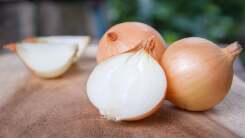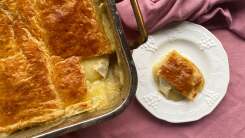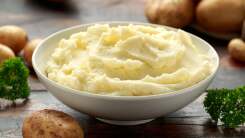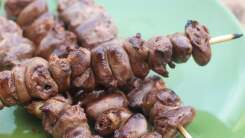Don't Use Soft Apples in Your Pies (and Other Ways to Choose the Right Apple for Cooking)
Apples are my favorite fruit, and it’s not particularly close. The sheer variety is what does it for me: I could try a handful of new-to-me varieties every year for the rest of my life and still feel like I had more to learn. The downside to all this variety, though, is that it can get overwhelming, especially when you’re trying to figure out which apple to use in a recipe. Honeycrisps taste great right out of the fridge, but what about in a pie? Do different varieties really make that much of a difference?
Unless you’re seeking out obscure heirloom cultivars from a local farm, the answer is no, not really. Most apples you find in stores or at farmer’s markets are “all-purpose” varieties, which means they’re equally delicious raw or cooked. Choosing the “right” apple for a recipe mostly depends on what you like, and knowing a little terminology can help you narrow things down.
Apple varieties are usually described in terms of both texture, which runs from soft to hard, and flavor, which runs from sour to sweet. Here are the most common descriptors you might see (in order of increasing hardness and sweetness):

Texture: Soft, tender, firm, crisp, hard
Flavor: Sour, tart, tangy or sweet-tart, sweet
Knowing where an apple falls on these two spectrums tells you almost everything you need to know, including how best to use it. Plus, it teaches you how to pinpoint your specific tastes, which will help you discover new favorites.
If you’d eat it, you can cook with it
Apples intended for eating—which are literally called “eating apples”—usually fall in the tangy-to-sweet and firm-to-crisp ranges. If you buy your apples at a grocery store, chances are very good that you’re getting an “eating” variety. This doesn’t mean you can’t cook eating apples; far from it. It just means that most people would rather eat something sweet and crisp than something sour and mushy (or sour and hard as a rock).
Think of cooking with apples like cooking with wine, which is to say, don’t overthink it. Any apple you’d happily eat raw will probably taste pretty damn good in a recipe.
Watch out for soft apples
With that said, whenever you cook or bake with apples, it’s important to consider their texture. Softer apples will disintegrate almost immediately when cooked, while firmer ones hold their shape. There are pluses and minuses to each, but firm apples are more versatile, which makes them more useful to home cooks.
In my opinion, using a soft apple where you need a firm one is the only way to irreparably fuck up an apple-based recipe before you even start. Soft apples easily turn to mush—perfect for applesauce and apple butter, but awful for pies, tarts, cakes, or whole baked apples.
These common varieties are on the softer side. Unless you’re making applesauce, it’s best to avoid them:
Cortland
Rome
McIntosh
Golden Delicious
Once you know a little bit about what makes apple varieties different from each other, it gets a lot easier to narrow down your options. When in doubt, stick with what you love and steer clear of the softies—unless that’s what you’re going for.
RECOMMENDED NEWS

The Foolproof Way to Add Rich Color to Your Turkey Stock
2025-10-15

You Deserve a Big Ol' Pan of Baked Brie
2025-10-14

Two Things You Should Never Do While Making Mashed Potatoes
2025-10-15

Should You Use a Metal, Glass, or Cast-Iron Pie Pan?
2025-10-14

Why You Should Prep Your Garnishes Before You Start Cooking
2025-10-18

You Can Make a Surprisingly Creamy Salad Dressing With Raw Zucchini
2025-10-18
Comments on "Don't Use Soft Apples in Your Pies (and Other Ways to Choose the Right Apple for Cooking)" :